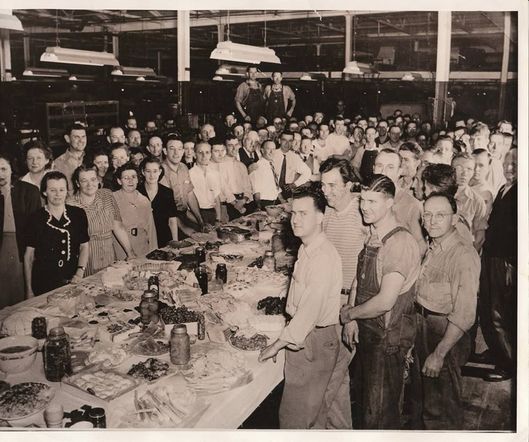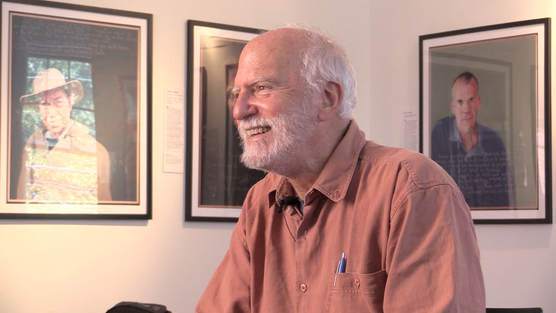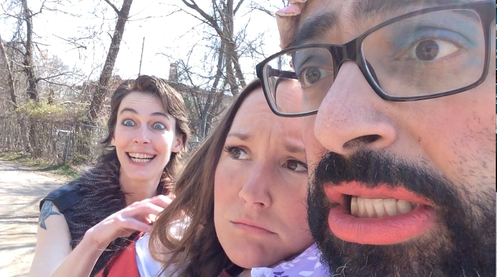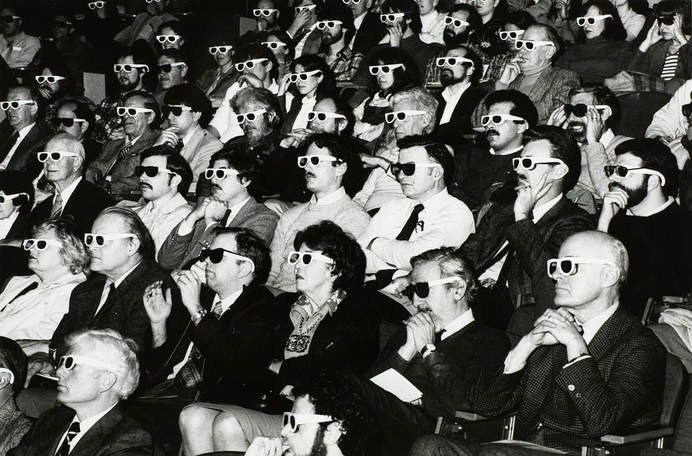 One of the most important questions that every film needs to answer is the one that is often neglected. Who are you making this for? I recently went to the 5th Annual Southern Documentary Fund Convening in Durham, NC. Last year I walked away with insight into my story structure and a pack of new friends who dubbed themselves the Doc Chicks. This year I am inspired in a different way. Blanket Town, my full length documentary film, is in a very different place than it was last year, and while I am still finishing up some pick- up filming and editing, I am also aware that it’s time to activate my outreach/distribution plan. Which means thinking deeply, once again, about who I want to see this film. It’s a painful cliche to ask the question “So who is your target audience?" and hear the reply “Oh everyone.” Aghhh! Of course we all want as many people as possible to see our films or watch our business’ video. But a target audience of everyone simply doesn’t exist. As one of this weekend’s speakers put it, imagine going down to the multiplex and buying a ticket to a movie, without specifying which film you want to see. I’d never do that. Would you? There is no such thing as a general audience. It doesn’t matter if you are a doc filmmaker, a business owner or a non-profit with an explainer video on your Facebook page or website. You still have to answer this question. Who do you want to see your film? Who is your target audience? Where do they hang out, both on and offline? The more specifically you can answer these questions, the better your chances of getting your work in front of them.
0 Comments
I went to Durham last weekend for a day and a half at the Full Frame Film Festival. As always it was a great chance to see some amazing new work, but also to see less commercial offerings from around the world. Last year quite a few of the films I watched garnered a good bit of acclaim, but this year I concentrated on films that may not end up on the Netflix list. Here are a few that stand out.  Won’t You Be My Neighbor?- I missed the Mr. Rogers phenomena, learning more about him from Saturday Night Live parodies than through watching his show. I admit I thought Mr Rogers was a nerd in his cardigan sweater and soft soled shoes. This film, however helped me appreciate all the ways he shaped American educational television and the culture of programming for children. And a kindly soft-soled approach to the world is certainly a refreshing change of pace in this age of insults and tweets. There is nothing fancy or especially innovative about this intimate look at the man behind the land of make believe. The film combines historical footage of the show, with interviews of family, former cast members and cultural critics. And it throws in some animation for good measure. But Won’t You Be My Neighbor? doesn’t need to be technically innovative to serve its story. An honest and emotional examination of the man himself, the transformative nature of the film is in the person being depicted. Maj Doris - A visually striking film that depicts the life of the Sami artist and activist Maj Doris Rimpi, who lives alone near the Arctic Circle, I loved how the film played with time. If you believe in the principles of slow food and slow conversation, then this is the film for you. We watch as Maj harvests lichens, feeds reindeer, makes tea, smokes cigarettes, make art, and dreams about escaping to a warmer climate. Walking out of the theater I overheard some audience members complain that the film wasn’t “about” anything. But I think that is precisely what I enjoyed - the chance to sink into the daily rhythms of a 74 year old woman living through a long winter in Sweden. 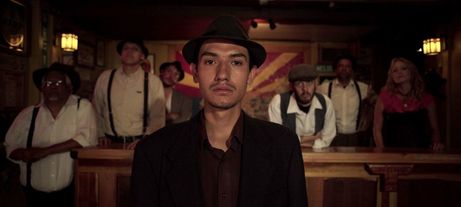 Bisbee ‘17- I had been looking forward to seeing this because it depicts a shameful incident from 100 years ago, when the town of Bisbee AZ, deputized local residents before rounding up and deporting its striking copper workers, most of them immigrants. Director Robert Green’s unconventional take on handling historical material and the lush cinematography make for a gripping journey. Working with the town’s centennial celebration committee, Green persuades the residents to re-enact the events of the past as a way to not only understand the forgotten history that helped shape the town into what it is today, but also connect how the past resonates with the present. Although I question some of the ethics around “re-enacting” acts of violent racism, it does make for compelling viewing. A must see for anyone interested in historical docs.  West Virginia native and documentary filmmaker Elaine McMillion Sheldon has been nominated for an Oscar in the short documentary category for her new film Heroin(e). An examination of the heroin and opioid crisis in Huntington West Virginia, the film follows three women who are fighting against a public health crisis which threatens to engulf their town. Available for streaming on Netflix, you can watch the trailer here. I had the pleasure of first meeting Sheldon at the Digging In Retreat at the Center for Documentary Studies in 2014. Fresh from her Peabody award and Emmy nomination for her work leading the interactive documentary website Hollow, Sheldon made several presentations about her work and that of other media makers who were documenting place. Discussions revolved around the issues of representation, trust, community engagement and history. She also offered feedback for scenes from Blanket Town, the documentary film I was working on. Hollow, the interactive documentary that brought her work to national prominence, looks at the collapse of McDowell County, West Virginia. It’s a self navigated site that allows viewers to choose where to look, read or hear. The material is arranged thematically, so you can meet people through their portraits- short films and pictures where they talk about what is important to them. It might be starting up a new business in one of the town’s abandoned storefronts or going to the high school football game on Friday night. I suspect the non-linear form of Hollow is an important way for an outsider like myself to navigate this Appalachian story. Sheldon is aware of how the story of places like McDowell County can get reduced to stereotypes- in the way that stories of Appalachia so often get reduced- only depicted as places of poverty and desperation. By refusing to offer a linear film, she challenges viewers to accept and deal with a more complex view. You can read here to learn more about Hollow. I watched Heroin(e) last night. It offers a complex take that drills beneath the shocking statistics of the opioid crisis in the U.S. What we see in the midst of this ravaged landscape are survivors- not only the addicts and former addicts who have literally been brought back to life numerous times, but also the three heroines who have survived this crisis with their humanity intact. These flat footed, no-nonsense women each offer pragmatic help to addicts, with clear boundaries. More importantly they refuse to succumb to feelings of despair in the face of overwhelming odds. They don’t seem numbed by death, prostitution, or lies from the very people they are trying to help. Instead they continue to bring compassion into each encounter - treating whoever crosses their path as a person, not a statistic. Heroin(e) offers a nuanced view of some of the stories behind the headline news. I have a confession to make. I’ve read the statistics about the importance of video content.
And yet I haven’t been using them. Until recently. Three days ago I posted a short archival video on my page for the documentary film I’m making, Blanket Town: The Rise and Fall of An American Mill Town and when I woke up it had 5,000 views. Not people reached. Over 5,000 views. No ads. Organic. Wow. 5000 people cared enough about the content to click on and watch what I posted, tagging friends, reminiscing in the comments section, talking about their experience of working at this textile mill. They shared the video as a way of connecting with and celebrating community. I make videos for a living and feel like I just figured out how potent that share button on Facebook can be with the right video content. It’s a lesson I’m not likely to forget. In this season of miracles, yes Virginia, I do believe. Update: We've now reached 11,000 views! Watch it yourself at the Blanket Town Facebook page. During the last week of September I had the pleasure of meeting and filming Robert Shetterly, the creator of the Americans Who Tell the Truth project. A painter, Rob has been creating large scale acrylic portraits of American “truth tellers” for the past 15 years. He started the project in 2002 in response to the United States’ buildup to the Gulf War, especially the falsehood about Iraq’s weapons of mass destruction. In my interview with him, Shetterly talked about the need to shift his focus away from his anger at the Bush administration and channel it into something more positive. Researching and painting these intimate portraits of courageous citizens who raised their voices against injustice, did the trick. The Americans Who tell the Truth exhibit at the YMI Center in downtown Asheville is part of a larger exhibit exploring themes of civic engagement, put on by the Asheville-based non-profit Education for Engaged Citizens. Prints of some of Shetterly’s 230 paintings, as well as portraits created by regional youth and posters of local activists are also on display through November 19th. Part of the exhibit features new paintings, including one of Bree Newsome, the activist/artist who climbed the flagpole in front of the South Carolina statehouse in 2015 to take down the confederate flag. Hanging out and filming Shetterly, Newsome, and the youth artists who are addressing some of this country’s most pressing social problems made for an inspiring week. I am sure that if you take the time to visit the exhibit, you too will feel a sense of inspiration and renewal. What: Americans Who Tell the Truth Where: YMI Cultural Center -39 S Market St Asheville, NC When: Sept 30- Nov. 19, 2017 Tues- Sat- 11:00 am- 4:00 pm Sun. 1:00-4;00 pm Check out the story below, from the Daily Kos that covered the events that I was filming about artist and activist Bree Newsome, who appeared in Asheville at the end of last month. She came as part of a series of events associated with the Asheville exhibit of Americans Who Tell the Truth, on display at the YMI through November 19th, and organized by Education for Engaged Citizens.
Stay tuned for links to the video of her September 29th conversation with Robert Shetterly of the Americans Who Tell the Truth project, as well as the short film I made about Bree and the act of civil disobedience that brought her into the national spotlight. www.dailykos.com/stories/2017/9/30/1703064/-Bree-Newsome-graces-Asheville-with-her-presence I’ve been working on a video that I shot for the Asheville-based non-profit, Education for Engaged Citizens, about the artist and activist Bree Newsome. Newsome climbed the flagpole on the grounds of the South Carolina state capital and removed the Confederate flag shortly after a white supremacist massacred nine black church members at a prayer meeting of the Mother Emmanuel AME Church in Charleston, SC. Newsome is also one of the change makers being honored by the painter Robert Shetterly’s Americans Who Tell the Truth project which creates portraits and narratives “that highlight citizens who courageously address issues of social, environmental, and economic fairness.” Shetterly creates gorgeous oil paintings of his subjects and includes information about their contributions to society as a way to inspire others to become more engaged citizens, working for the common good.
As part of their mission to use the power of art and story to help youth to become culturally literate and engaged citizens, Education for Engaged Citizens, is bringing a travelling exhibit of American's Who Tell the Truth to Asheville's YMI Cultural Center, where Bree’s portrait will be unveiled and displayed. In addition to Shetterly’s work, the local exhibit will include posters of area activists as well as art work by local youth. Both Shetterly and Newsome will be at the opening event and reception on Sept 30th. You can find out more information and buy tickets here. It’s been interesting to work on this video over the past few weeks, after the white supremacy march in Charlottesville and the recent protests in cities across the south to remove confederate monuments from public places. All of this makes me think more deeply about the role of stories in both our public and private lives. In her interview Newsome talks about being shaped by the stories of her ancestors, some of whom were enslaved and others whose acts of strength and resistance in the face of institutional racism and segregation, are a kind of North star for her. "I see myself as being part of a struggle that has been going on for a long time," she says. She also talks about the strength she gains from knowing the history and stories of others who fought against oppression, whether as participants in the underground railroad or the civil rights movement. “Those kinds of things encourage me, the fact that we have documented historical fact that there can be a form of oppression, and people can organize and change it. And I think that’s part of what keeps me going. That’s part of why I encourage everybody to study history more. Because it’s not hopeless. It’s really not.” One definition of history might be the stories that we collectively tell ourselves about the past. As a nation we seem to be questioning the stories that comprise our shared history, examining which voices have been historically privileged, and, hopefully, listening for the diverse other stories that we most need to hear. The documentary film Samuel in the Clouds by Pieter Van Eecke opens with dripping sounds- water drops from the ceiling into tea cups and metal pots. Droplets trickle down hand carved wooden eaves. It is a symphony of sounds, beautiful and melodic but also ominous. A metronome. A ticking clock.
For generations, Samuel Mendoza’s family has run a ski lift on this mountain in the Andes. But the glacier, considered a holy place, serving as both a spiritual and economic center, is melting. And with it, the family business. The film doesn’t preach- it doesn’t fill our heads with statistics of glacial loss or the rising tides of coastal cities - it simply guides us to this wild endangered land and asks us to bear witness. To sit with the mountain wind and rocky landscape. To watch the archival footage of a more prosperous, snowy, past, To listen to the quiet sounds of climate change. In the wake of this administration’s decision to withdraw from the Paris Climate agreement I’m thinking about my own complicity in the coming environmental disaster. I like to consider myself one of the good guys. I recycle. I compost. We have chickens for goodness sake. But I am reminded of all that I take for granted, the everyday conveniences that directly impact someone’s life on the other side of the globe. My little luxuries versus their struggle to survive. And not owning this feels very much like the magical thinking that makes it okay for the U.S. to create greenhouse gases and be the primary polluter on the planet, but refuse to help clean up the mess. I’m thinking of all the little ways our daily choices add to this problem. The Keurig cups and clamshells of organic salad greens. The bottled water and plastic straws and idling cars in the drive through lines. It seems that one of the biggest ways I contribute to climate change is simply because I say I don’t have enough time. I rush from from place to place, grabbing fast food while speeding down I- 40, because I don’t have time to cook. I drive from work, to rehearsal, to somewhere else because there is lousy public transportation in my town and I don’t have time to carpool or wait for a bus. But what does it mean when I don’t have time to prepare food in an ethical way? Or plant a few greens in the patch I call my own? If I am honest with myself I actually do have the time to do these things. I am simply choosing not to. To grow and prepare some of my own food. To make sure the cloth bags are in the trunk before I head to the store. To consolidate trips in the car. To take the time to slow down and stop pleading busyness as my excuse for dissing the planet. I hope in the future when I am rushing around I will reconsider my pace and remember the sad beauty of Samuel in the Clouds and the image of that once majestic glacier, steadily melting away. I recently returned from the 20th Annual Full Frame Documentary Film Festival in Durham NC where I saw around 18 films in four days and came away exhilarated and inspired. Here’s some information on just a few of the films that made lasting impressions on me. Strong Island- Unflinchingly honest. Inventive. Hard. A soul bearing journey through grief as the filmmaker investigates his brother's murder, 25 years later. Combining the personal with the political, Strong Island looks at the corrosive effects of loss, racism, and institutional injustice. The film won the Charles E Guggenheim Emerging Artist Award and the Center for Documentary Studies Filmmaker Award. It also has a distribution deal with Netflix. Quest - Intimate, courageous and affirming. We follow the life of the Rainey family in North Philadelphia as they navigate challenging circumstances, supported by their love for one another and the community they create. The film won the grand jury prize for best documentary and the Kathleen Bryan Edwards Award for Human Rights at Full Frame and is racking up awards and appearances at other festivals across the U.S. Plastic China- One of the most painful films I saw. Two families living in a plastic waste recycling facility in China, where they sort through mountains of trash shipped over from Europe and the USA . Imagine your worst nightmare of a hazardous dump. This is far far worse, yet is punctuated by the laughter and fragile hope of the children who work and play there. Part of the film’s effectiveness is that although it is about our runaway consumer culture and its attendant waste, it never directly mentions these things, or overwhelms us with statistics. Instead we see how these families live and begin to understand our complicity in creating their circumstances. The film won Honorable Mention for the Full Frame Environmental Award. Of course many, if not most documentarians, hope their films will motivate people to take action. The films I saw make me want to finally attend one of the Showing Up For Racial Justice meetings in Asheville, take steps beyond recycling to cut down on our household waste, and re-examine my commitment to building community. Perhaps they will inspire you as well.
I'm back in a darkened theater in the middle of a tech rehearsal with actors. Which means I've had nothing in my stomach all day but two and a half donuts and coffee. Ahh the perils of live theater. I’m creating the video design for Asheville Creative Arts production ofThe Red Riding Hood Show at the Magnetic Stage in Asheville, which runs April 5-9.
Earlier this spring I filmed four short scenes inspired by the silent comedic chases of the Keystone Cops and Roadrunner and Coyote. The actors were fun to work with, full of great ideas, and willing to look foolish. That part of my job was fairly straightforward. The other part of the video design was to figure out a way to simulate the appearance of live video streaming onstage. That meant trying out various forms of technology to mirror the phone’s camera to the projector and troubleshooting moments to create the most effective visual images. We settled on a mirroring app, Reflector 2, that we've been exploring for the past week. It’s been an interesting marriage of my old and new professional selves. In my old life I've logged a lot of time in dark theaters, rehearsing with actors, going through the dreaded load in and tech. There is comfort in re-engaging with these rituals. To be familiar with each stage of the process - the first read through, rehearsals, blocking. At the same time it’s a relief not to be in my old role of director. Instead I have one simple job. To supervise the video. So in between scenes I can sit in the dark, writing this blog. Waiting for my part.
Click to set custom HTML
|
NEWS ARCHIVES
July 2021
|

